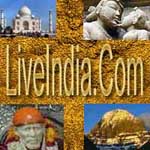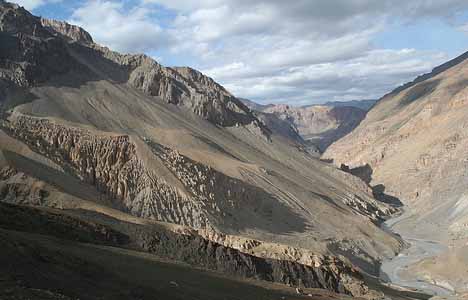 |
 |
 |
 |
 |
 |
 |
| Home | Attraction in Leh Ladakh | Hotels Leh Ladakh | Travel Tips to Leh Ladakh | Festivals in Ladakh |
In the 8th century, Ladakh was involved in the clash between Tibetan expansion pressing from the East and Chinese influence exerted from Central Asia through the passes, and suzerainty over Ladakh frequently changed hands between China and Tibet. In 842 Nyima-Gon, a Tibetan royal representative annexed Ladakh for himself after the break-up of the Tibetan empire, and founded a separate Ladakh dynasty. During this period Ladakh underwent Tibetanization resulting in a predominantly Tibetan population. The dynasty spearheaded the "Second Spreading of Buddhism" importing religious ideas from north-west India, particularly from Kashmir. Faced with the Islamic conquest of South Asia in the 13th century, Ladakh chose to seek and accept guidance in religious matters from Tibet. For nearly two centuries, till about 1600, Ladakh was subject to raids and invasions from neighbouring Muslim states, which led to weakening and fracturing of Ladakh, and partial conversion of Ladakhis to Islam King Bhagan reunited and strengthened Ladakh and founded the Namgyal dynasty which survives even today. The Namgyals repelled most Central Asian raiders and temporarily extended the kingdom as far as Nepal, in the face of concerted attempts to convert the region to Islam and destroy Buddhist artifacts. In the early 17th century efforts were made to restore destroyed artifacts and gompas, and the kingdom expanded into Zangskar and Spiti. Ladakh was, however defeated by the Mughals, who had already annexed Kashmir and Baltistan, but it retained its independence.
At the time of the partition of India in 1947, the Dogra ruler Maharaja Hari Singh was undecided whether to accede to the Indian Union or to Pakistan. The Indian government sent troops into the princely state after the ruler signed the Instrument of Accession. In 1949, China closed the border between Nubra and Xinjiang, blocking old trade routes. The Chinese invasion of Tibet in 1950 led to a large influx of Tibetan refugees to the region. In 1962 China invaded and occupied Aksai Chin, and promptly built roads connecting Xinjiang and Tibet through it. It also built the Karakoram highway jointly with Pakistan. India built the Srinagar-Leh highway during this period, cutting the journey time between Srinagar to Leh from 16 days to two. The entire state of Jammu and Kashmir continues to be the subject of a territorial dispute between India on the one hand and Pakistan and China on the other. Kargil was a scene of fighting in the wars of 1947, 1965, 1971 and the focal point of a potential nuclear conflict during the Kargil War in 1999. The region was bifurcated into Kargil and Leh districts in 1979. In 1989, there were violent riots between Buddhists and Muslims. Following demands for autonomy from the Kashmiri dominated state government, the Ladakh Autonomous Hill Development Council was created in 1993. For centuries, Ladakh enjoyed a stable and self-reliant agricultural economy based on growing barley, wheat and peas, and keeping livestock, especially yak, dzos (yak-cow cross breed), cows, sheep and goats. At altitudes of 3,000 to 4,300 m (10,000 to 14,000 ft), the growing season is only a few months long every year, similar to the northern countries of the world. Animals are scarce and water is in short supply. The Ladakhis developed a small-scale farming system adapted to this unique environment. The land is irrigated by a system of channels which funnel water from the ice and snow of the mountains. The principal crops are barley and wheat. Rice was previously a luxury in the Ladakhi diet, but, subsidised by the government, has now become a cheap staple. At lower elevations fruit is grown, while the high altitude Rupshu region is the preserve of nomadic herders. In the past, surplus produce was traded for tea, sugar, salt and other items. Two items for export are apricots and pashmina. Currently, the largest commercially sold agricultural product is vegetables, sold in large amounts to the Indian army as well as in the local market. Production remains mainly in the hands of small-landowners who work their own land, often with the help of migrant labourers from Nepal. Naked barley was traditionally a staple crop all over Ladakh. Growing times vary considerably with altitude. The extreme limit of cultivation is at Korzok, on the Tso-moriri lake, at 4,600 m (15,100 ft), which are widely considered to be the highest fields in the world.  Adventure tourism in Ladakh
started in the 19th century. By the turn of the 20th century, it was not
uncommon for British officials to undertake the 14-day trek from Srinagar
to Leh as part of their annual leave. Agencies were set up in Srinagar
and Shimla specialising in sports-related activities — hunting, fishing
and trekking. This era is recorded in Arthur Neves The Tourist's Guide
to Kashmir, Ladakh and Skardo, first published in 1911. Today, about 30,000
tourists visit Ladakh every year. Among the popular places of tourist interest
include Leh, Drass valley, Suru valley, Kargil, Zangskar, Zangla, Rangdum,
Padum, Phugthal, Sani, Stongdey, Shyok Valley, Sankoo, Salt Valley and
several popular trek routes like Manali to Ladakh, the Nubra valley, the
Indus valley etc
|
| Introduction Leh Ladakh | Attraction in Leh Ladakh | Hotels Leh Ladakh | Travel Tips to Leh Ladakh |
|
Copyright © 1998-2006 LiveIndia.com All rights reserved ( The Trade Marks Act, 1999, No. 01403086. User Since : 01/04/1997 ) All rights reserved. No part of this publication and other sites of under liveindia.com may be transmitted or reproduced in any form or by any means without prior permission from the publisher Live India Internet Services or Mr.Rajesh Chopra, L.C.Premium Cables, 1826, Amar Nath 2nd Building, Bhagirath Palace Delhi - 110006, India. Liveindia.com or Mr.Rajesh Chopra is not responsible for any wrong information under live india's sites, For confirmation of any information it is recommended that you reconfirm it from your end. |